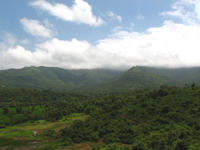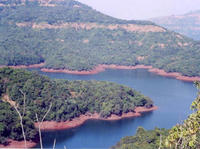You are in: Asia -> India -> Western Ghats, and traditional search or Image Gallery will yield results of this site only
Western Ghats
| Site number: | 1342 |
|
| Type of site: | Natural | |
| Date of Inscription: | 2012 | |
| Location: | Asia, India: Gujarat, Maharashtra, Goa, Karnataka, Kerala, Tamil Nadu | |
Up to 75 images are shown here. Click on each for more details or on Image Gallery for more images.
Six official UN languages:
Chinese,
English,
French,
Russian,
Spanish
Other languages: Bengali, Bulgarian, Catalan, Croatian, Czech, Dutch, Esperanto, Finnish (Suomi), Georgian, Hebrew, Hindi, Hungarian, Italian, Japanese, Kannada, Kazakh, Malayalam, Marathi, Norwegian-Bokmai, Polish, Portuguese, Punjabi, Romana, Sanskrit, Swedish, Tamil, Telugu, Ukrainian, Vietnamese
Other languages: Bengali, Bulgarian, Catalan, Croatian, Czech, Dutch, Esperanto, Finnish (Suomi), Georgian, Hebrew, Hindi, Hungarian, Italian, Japanese, Kannada, Kazakh, Malayalam, Marathi, Norwegian-Bokmai, Polish, Portuguese, Punjabi, Romana, Sanskrit, Swedish, Tamil, Telugu, Ukrainian, Vietnamese
| Description: | Older than the Himalaya mountains, the mountain chain of the Western Ghats represents geomorphic features of immense importance with unique biophysical and ecological processes. The site’s high montane forest ecosystems influence the Indian monsoon weather pattern. Moderating the tropical climate of the region, the site presents one of the best examples of the monsoon system on the planet. It also has an exceptionally high level of biological diversity and endemism and is recognized as one of the world’s eight ‘hottest hotspots’ of biological diversity. The forests of the site include some of the best representatives of non-equatorial tropical evergreen forests anywhere and are home to at least 325 globally threatened flora, fauna, bird, amphibian, reptile and fish species. --WHMNet's description is from WHC Site, where additional information is available. | |
| The Western Ghats, Western Ghauts or the Sahyādri constitute a mountain range along the western side of India. It is an UNESCO World Heritage Site and is one of the eight hottest hotspots of biological diversity in the world. This range runs north to south along the western edge of the Deccan Plateau, and separates the plateau from a narrow coastal plain along the Arabian Sea. The range starts near the border of Gujarat and Maharashtra, south of the Tapti river, and runs approximately 1,600 km (990 mi) through the states of Maharashtra, Goa, Karnataka, Tamil Nadu and Kerala ending at Kanyakumari, at the southern tip of India. These hills cover 160,000 km2 (62,000 sq mi) and form the catchment area for complex riverine drainage systems that drain almost 40% of India. The Western Ghats block rainfall to the Deccan Plateau. The average elevation is around 1,200 m (3,900 ft). The area is one of the world’s ten "Hottest biodiversity hotspots" and has over 5000 species of flowering plants, 139 mammal species, 508 bird species and 179 amphibian species; it is likely that many undiscovered species live in the Western Ghats. At least 325 globally threatened species occur in the Western Ghats. The Western Ghats are home to thousands of animal species including at least 325 globally threatened species. Many are endemic species, especially in the amphibian and reptilian classes. Thirty two threatened species of mammals live in the Western Ghats. Of the 16 endemic mammals, 13 are threatened. --Wikipedia. Text is available under the Creative Commons Attribution-ShareAlike License. | ||
| Source: | http://whc.unesco.org/en/list/1342 | |
| Reference: | 1. UNESCO World Heritage Center (http://whc.unesco.org/en/list/1342). 2. Wikipedia. | |




























